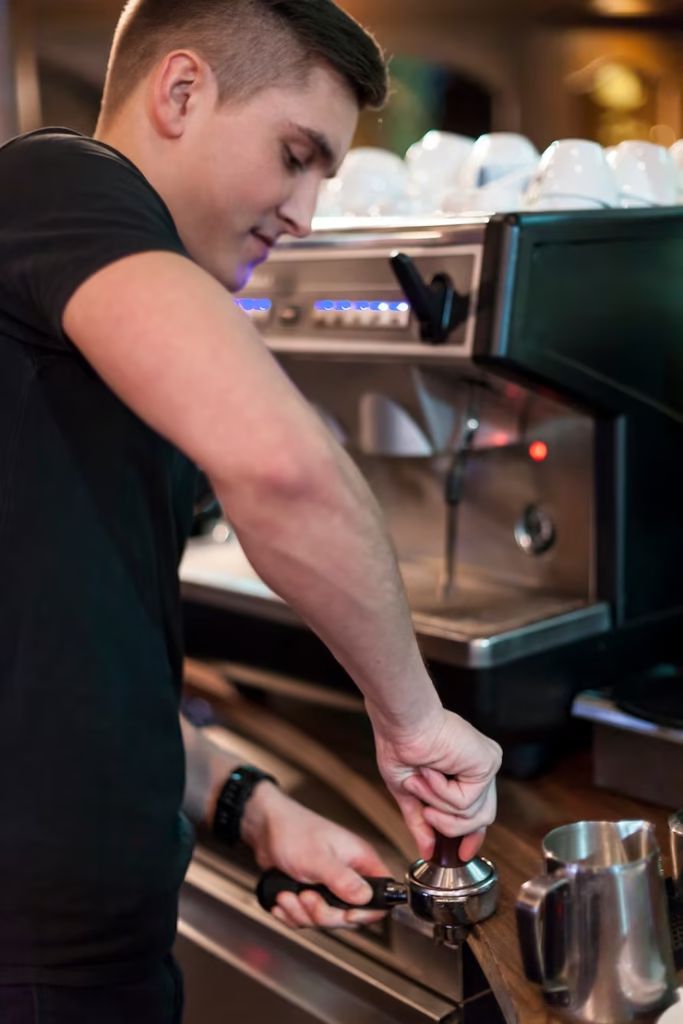
If you want an espresso machine with all the bells and whistles, it is an investment. Thus, it is critical to think about the kind that best suits your requirements.
✔️ Type: The home barista can make espresso in a variety of methods using manual, semi-automatic, automatic, super-automatic, and pod machines.
• Finely ground beans must be put into a portafilter and tamped down for manual machines. Water is manually drawn through the grounds using a lever, and the filter is fixed to the brew head. Although it is the most adaptable approach, it is also possibly the hardest to learn.
• While the size of the brew can be controlled, semi-automatic machines function similarly to manual machines in terms of preparation, using a button or dial to automate the water flow rather than a lever.
• Automatic machines make espresso by pressing a button rather than a lever. The espresso or coffee drink’s size is automatically adjusted and frequently programmable. Compared to a manual or semi-automatic machine, this process is more consistent and extremely user-friendly. In lab exams, this approach frequently resulted in high scores.
• The next step up from automatic machines are fully automated ones. They can ground beans, measure them out, and frequently tamp them for you in addition to having programmable and automatic coffee sizes. Because of their all-around performance, these were usually our favorites in lab testing.
• To produce espresso or other coffee drinks, capsule machines use pods that contain pre-measured coffee. They provide the highest level of reliability and
✔️ Size: Take into account how much room you need for your espresso maker. Smaller ones tend to be simpler and have fewer brewing options, while larger ones tend to be more configurable.
✔️ Cost: A basic espresso maker is typically less expensive than a high-end model with extras like a built-in grinder and several drink options. However, some seemingly simple espresso makers can be expensive because they use better materials and include more efficient milk frothers, heaters, or other technology.
✔️ Pressure: Barometric pressure, or BARs, are used to measure the force applied to coffee grinds. A machine that applies 7 to 11 BARs of pressure to the espresso will yield a satisfactory extraction, while some machines have up to 19 BARs.